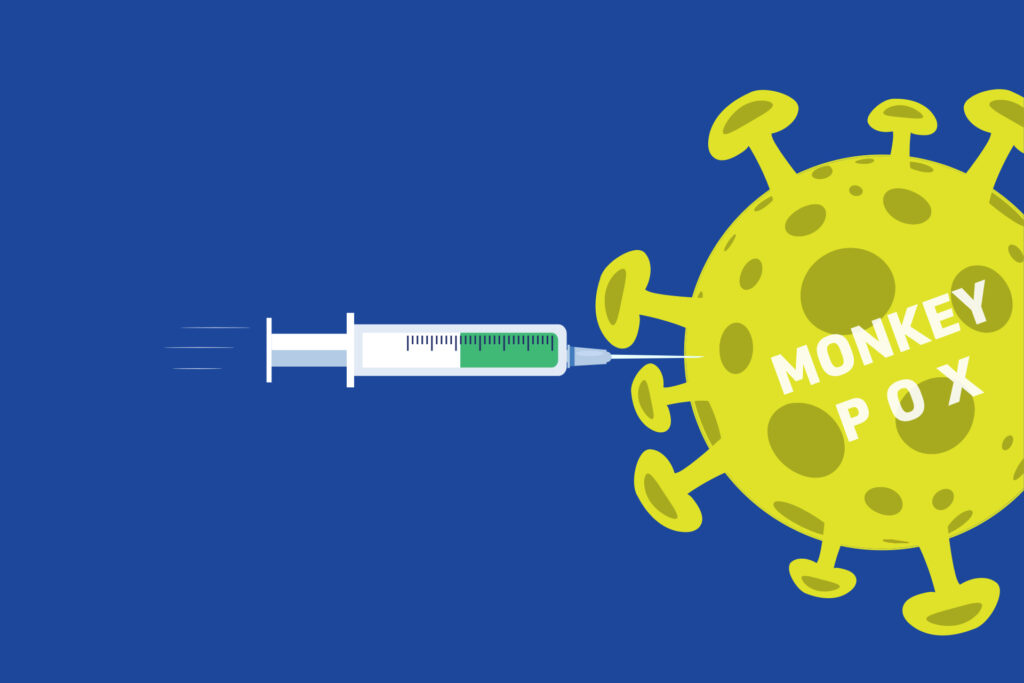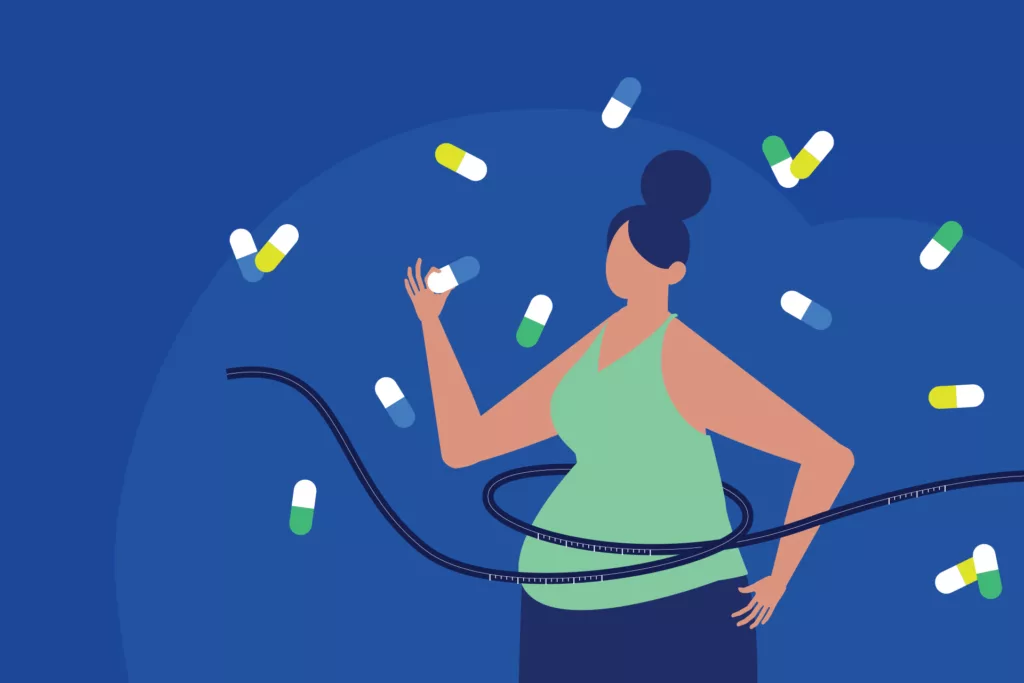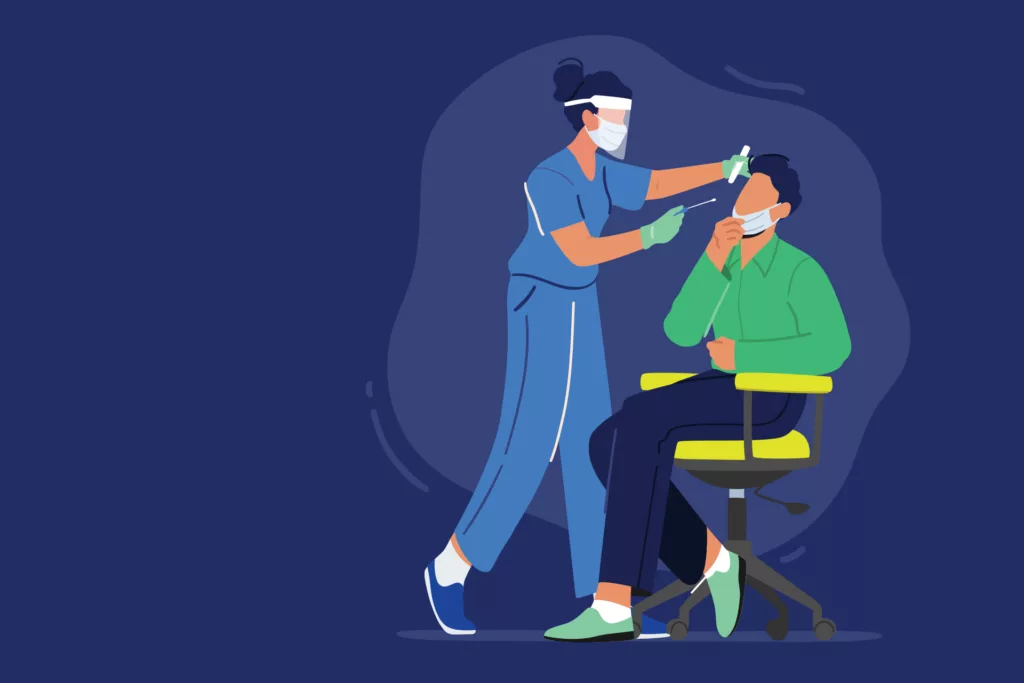Recent months have brought new waves of viral infections across the globe, particularly, monkeypox. Scientists first identified monkeypox in Denmark in the late 1950s in a colony of laboratory monkeys from Singapore that were going to be used for polio research. The monkeypox virus is within the same genus as smallpox—and the vaccine that was developed for smallpox is shown to be effective in preventing monkeypox. Monkeypox appears to be less deadly than smallpox. This review will discuss the background of the disease states and treatments available for those affected.
Smallpox is caused by the variola virus and resulted in fever, rash, and high mortality rate. This disease was spread mainly through respiratory viral droplets from sneezing or coughing. Those infected with smallpox became contagious once lesions appeared around their face and remained contagious until the final scab fell off. This was a highly infectious disease that was successfully eradicated in the 1950s for the United States (U.S.) and the 1980s for the rest of the world through vaccinations. The vaccine effectively prevented further disease spread or modification of the disease.
Since July of 2018, there have been two agents approved by the U.S. Food and Drug Administration (FDA) for the treatment of smallpox disease: Tecovirimat and Brincidofovir. These agents are not available for commercial use and instead are only acquired through the U.S. Government’s Strategic National Stockpile. Both agents gained approval under the FDA’s “Animal Rule,” which allows the approval of drugs—based upon well-controlled animal efficacy studies—when the agent treats or prevent serious/life-threatening conditions and when human efficacy studies are not ethical and field trials are not feasible.
Monkeypox, which is genetically similar to smallpox, was first identified in humans in the Democratic Republic of Congo in the 1970s. During this time, 59 cases of monkeypox occurred in the rain forest areas of West and Central Africa in people that were exposed to small forest animals. The first time the U.S. saw monkeypox cases were in 2003. Up until now, monkeypox typically occurred in nonendemic countries and were mostly related to travel. The World Health Organization (WHO) continued to monitor monkeypox cases and raised concerns about the discontinuation of the smallpox vaccine, which also protected against monkeypox. The WHO worried about the possibility of increased susceptibility and incidence of monkeypox infections without protection from the smallpox vaccine.
A global outbreak of monkeypox was declared in Europe in May 2022 and labeled a “public health emergency of international concern” by the WHO in July 2022. As of August 2022, the U.S. has more than 14,000 confirmed cases of monkeypox. Data from this outbreak has shown that the incubation period following initial exposure has ranged from 7 to 10 days. Symptoms typically include fever, headache, sore throat, back pain, myalgia, and fatigue. These can occur before or after the appearance of the rash associated with monkeypox.
The transmission of monkeypox occurs via animal-to-human and human-to-human. It is acquired through contact with infected bodily fluids (via skin lesions) through a bite, or through raw or minimally processed meat from wild animals in certain parts of the world. Evidence of a host body where monkeypox is thought to reside is still unknown, but it is likely believed to come from rodents. It was also discovered that close contact with infectious skin during sexual or close intimate contact was another main mode of transmission of monkeypox within this recent outbreak. Data trends within the U.S. have shown that a disproportionately high number of monkeypox cases have been identified in men who have reported recent sexual contact with other men (MSM). In a report of over 500 confirmed cases in 16 countries, 98% of the persons were MSM. This has led to people becoming infected with lesions in their anogenital region. Due to these findings, it is important for the MSM community to practice safe sex techniques and reach out to their primary care provider if they notice something unusual on themselves.
Vaccines are being deployed to combat the rise of monkeypox infections. These vaccines are used in two types of settings: emergency/outbreak areas and routine non-emergency areas. In the emergency/outbreak areas, vaccination is indicated for post-exposure prophylaxis and for communities at high risk for exposure to the monkeypox virus. Routine non-emergent areas include occupational settings for people working with these viruses. These involve research laboratory workers and select healthcare-worker response teams.
There are two vaccines available for the prevention of smallpox and monkeypox: Jynneos, a replication-deficient Modified Vaccinia Ankara (MVA) vaccine and ACAM2000, a replication-competent smallpox vaccine. Jynneos has an excellent safety profile, including in immunocompromised (weakened immune system) patients and those with skin disorders. This vaccine does not contain the monkeypox or smallpox virus and cannot cause disease or reproduce in human cells. Jynneos was actually approved back in September 2019 to prevent smallpox and monkeypox in adults 18 years and older. It was originally approved to be dosed at 0.5ml subcutaneously in a two-dose series separated by 4 weeks. However, on August 9, 2022, the FDA issued an emergency use authorization (EUA) that allowed Jynneos to be administered intradermally (between layers of the skin) as opposed to a subcutaneous administration which is beneath the skin. This difference in route of administration allowed Jynneos to be dosed at a much smaller dose of 0.1ml which immediately expands the supply of Jynneos. Shortly after, another EUA was issued which allowed Jynneos to be used in pediatrics under 18 years old. One thing to note is that only the subcutaneous route is approved for pediatrics and the dose is 0.5ml. Jynneos has been the primary vaccine used during this outbreak in the U.S. The ACAM2000 vaccine is an alternative to Jynneos and can only be given to select patients. It is associated with more adverse events than Jynneos. Within the U.S., the ACAM2000 is approved for the prevention of smallpox and can be used for monkeypox under an Expanded Access Investigational New Drug protocol in conjunction with the Centers for Disease Control and Prevention (CDC).
These vaccines are not commercially available, but the U.S. government is providing the monkeypox vaccine at no cost to the public. Local state health officials in North Carolina and Chicago have reported that most of their monkeypox cases have been seen in queer Black and Brown communities. However, the access to vaccines for those communities have been limited, leaving at least half of those in need without access to a vaccine. Health officials need to understand their data and realign their efforts better to get the vaccine to the communities that are most at risk for monkeypox infection.
While there are no treatments specifically for monkeypox, antiviral drugs used in the treatment of smallpox may be used to help treat monkeypox infections. Based on CDC guidance, Tpoxx (tecovirimat) may be used to treat monkeypox in patients who are more likely to become severely ill, such as those that are immunocompromised. Tpoxx is available in both oral and IV formulations. The duration of treatment is 14 days. Tpoxx is not available commercially but is provided by the US government through the Strategic National Stockpile. Most people with monkeypox infections recover fully within 2 to 4 weeks without the need for medical treatment.
According to the CDC, if a person does become infected with monkeypox, it is advised to isolate at home until the symptoms have ended, the rash has completely healed, and new skin has formed. It is important to isolate from other humans and pets, as monkeypox can easily be spread to animals and other livestock. If a person shares a space with others, it is best to avoid close contact, avoid sharing a bed/linens/towels, wear a mask, cover any lesions, and disinfect surfaces.
Prevention is accomplished through hygiene and safe practices by all. Vaccinations and treatments are used for those that have become infected, are at highest risk for becoming infected, and those that are more likely to become severely ill.
Public health officials for each country affected determine who and what people are eligible for the vaccines. The smallpox vaccine was administered during its outbreak and was able to completely eradicate the disease for years to come. Both the WHO and CDC agree that these vaccines should be used in patients as post-exposure prophylaxis to prevent monkeypox disease. Diligence in healthcare settings, prompt and accurate testing, and practicing safe techniques along with vaccination can also help to reduce the numbers of those affected by monkeypox and eventually lead to the end of this global outbreak.







